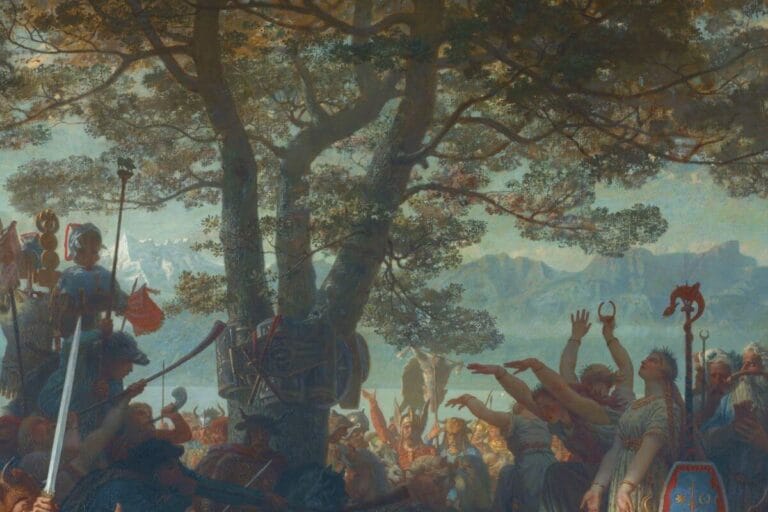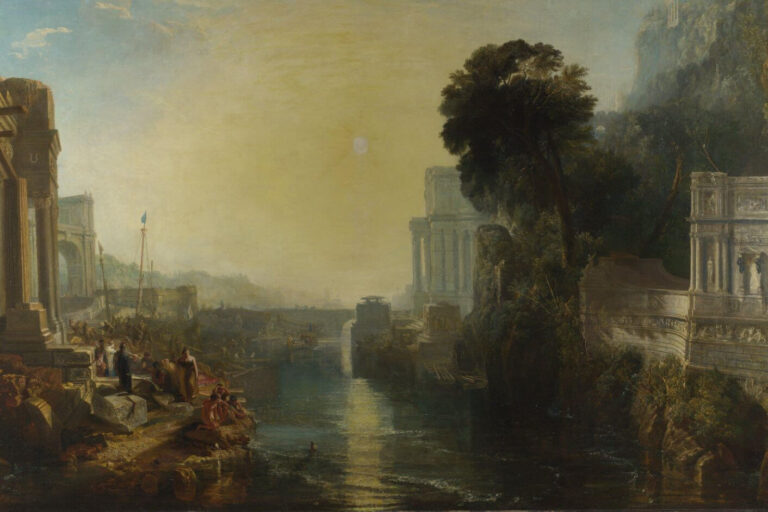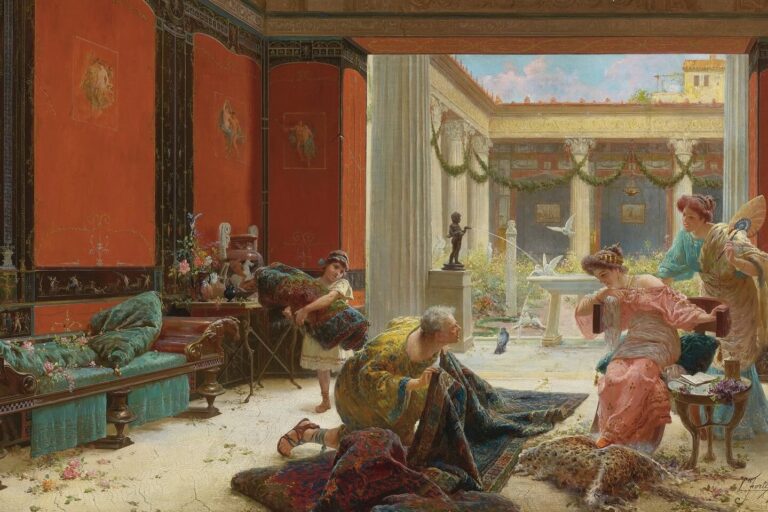The Via Appia, also known as the Appian Way, was one of the oldest and most important Roman roads. It connected the capital city of Rome with the port city of Brundisium in southeast Italy, where people would typically embark for Greece. The Roman poet Statius lovingly called it the ‘queen of the long roads’ (Silvae 2.2.12, longarum … regina viarum).
Construction
The Via Appia is named after Appius Claudius Caecus, the Roman censor who initiated the building project in 312 BC. It was originally constructed to transport troops and supplies from Rome to southern Italy, where the Romans were fighting the Samnites at the time. After the conquest of Campania, it was soon used for the purpose of trade and travel as well. The Via Appia initially ran as far as Capua, but it was later extended to Brundisium.

The road was made up of several layers. After the top soil was removed, crushed stones were put in place with mortar to serve as a foundation, followed by a layer of gravel, and finally topped with tightly fitting basalt stones. Despite all the natural barriers on its way, such as the Alban Hills and the Pontine Marshes, the road for the most part was built remarkably straight. The Byzantine historian Procopius in his account expressed his admiration for this feat of engineering.
“The breadth of this road is such that two waggons going in opposite directions can pass one another, and it is one of the noteworthy sights of the world. (…) [The stones] were fastened together so securely and the joints were so firmly closed, that they give the appearance, when one looks at them, not of being fitted together, but of having grown together. After the passage of so long a time, and after being traversed by many waggons and all kinds of animals every day, they have neither separated at all at the joints, nor has any one of the stones been worn out or reduced in thickness, — nay, they have not even lost any of their polish. Such, then, is the Appian Way.”
Procopius, History of the Wars 5.14.7-11 (trans. H.B. Dewing)
Sites Along The Appian Way
The Appian Way is dotted with historic sites that can still be seen today on a walk or bicycle round. Especially the first part closer to Rome has been well preserved. Among other things, one encounters mostly a lot of Roman family tombs, since it was forbidden in ancient Rome to bury the dead inside the religous boundaries of the city (pomerium). Many of these monuments still bear legible inscriptions and images of the deceased.

The Basilica of Saint Sebastian Outside the Walls
The basilica of Saint Sebastian is often the first site for people to visit along the Appian Way, because the first stretch from the city walls onwards is traffic-ridden and unpleasant to explore on foot. The richly decorated basilica, dedicated to the Christian martyr Saint Sebastian, contains the marvelous Bust of the Saviour by Bernini. Most visitors, however, are more interested in the catacombs located underneath the basilica. The Christian necropolis (‘city of the dead’), built in an abandoned stone quarry, dates back to the second century and can still be visited today. Contrary to the Romans, the Christians always burried their dead, since the body was expected to one day rise again.

Circus of Maxentius
The Circus of Maxentius is the best-preserved of the Roman circuses, being only second in size after the Circus Maximus. Built by emperor Maxentius between 306 and 312 AD as part of a bigger villa complex, it was capable of housing around ten thousand spectators for chariot races. One can still see the outlines of the old circus, with the outer walls, the starting gates (carceres), the juxtaposed towers, and the turning points (metae) at either side of the inner wall (spina). It is one of the Rome’s most idyllic and peaceful sites.

Tomb of Caecilia Metella
The Tomb of Caecilia Metella is one of the most iconic sights along the Via Appia. It is a massive cylindrical tomb that was built in the 1st century BC for a woman named Caecilia Metella, the daughter of a Roman consul and the wife of a wealthy general, who happened to be the son of Marcus Licinius Crassus who was famously part of the First Triumvirate. The round shape of the tomb, like that of the Mausoleum of Augustus, was inspired by Etruscan burial mounds (tumuli). Because it was later transformed into a defensive tower and incorporated into a medieval castle, the tomb has been extremely well preserved.

Villa of the Quintilii
The Villa of the Quintili is an ancient Roman villa that was built by the wealthy Quintili brothers, who were both consul in 151 BC. The property was later confiscated by emperor Commodus, who was jealous of their possessions and subsequently killed the brothers for allegedly plotting against him. The villa complex must have been impressive to behold, with the extensive bathing facilities (thermae) fed by its own aquaduct, the hippodrome, the large residential area, the great gardens, and the rich collection of sculptures and mosaics, some of which are now displayed in the museum on the site. When first excavated, the site was even named ‘Roma Vecchia’ (Old Rome), because it suggested the scale of an actual town. The site is usually one of the last stops for explorers of the Appian Way, because the section further down the road is by and large not as well well preserved.

Further Reading
While writing this article, I made extensive use of the fabulous Blue Guide: Rome, which is an excellent source that I can recommend to everyone. I have also read the Dutch book Via Appia by Fik Meijer, which serves as a fine introduction. For anyone who is eager to get a sneak peak of the Appian Way, I would urge you to give the virtual tour below (by Walks in Rome) a try, so you can get a real sense of what it feels like to walk along the queen of roads.



